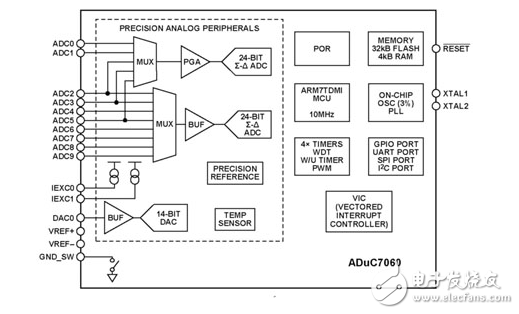
资料下载

传感器控制和接口用微控制器系统
传感器控制和接口用微控制器系统
微控制器正在成为工业和商业系统中基于传感器的系统的核心引擎。创建核心平台和只为传感器应用程序实现低成本软件和固件更改的能力,推动了开发板的可用性和多样性的增加。虽然主要通过串行端口接口,模拟信号和混合信号传感器影响微控制器的性能、操作系统的选择和整体设计的功率/性能。使用特定的开发板简化了设计任务,并有助于及时完成设计。
传感器控制与接口
嵌入式系统越来越多地使用多个传感器来对环境进行采样。大量的传感器使用简单的串行接口产生数字输出,可由单片机直接处理。这些系统使用传统的串行接口,多路传感器之间提供控制器的结构来处理在一个时间只有一个输入(GPIO,我²C、SPI、RS232、RS422、等)。其他串行传感器设备包括USB接口的全协议管理和该接口用于多设备管理的方法。

While communication with sensors is digital, most sensors are analog. Analog sensors include light and IR detectors, thermocouples, touch controllers, sound and external-area motion sensors, device position and movement sensors, and temperature and pressure sensors. The resolution and accuracy levels of analog sensors dictate not only the size of the data stores and word size but also the speed and math processing capabilities of the MCU.
Since there many different types of sensors, the primary method for system development involves selecting a core controller and then programming in software an application that calls an interface software routine for the specific sensor being used. Using this approach, the designer can create a common design platform and GUI while leaving the final optimization step for a particular sensor and application until the very end of the design cycle. Most of the MCU software development kits (SDKs) are designed to support this methodology and include development boards that are optimized for this approach.
声明:本文内容及配图由入驻作者撰写或者入驻合作网站授权转载。文章观点仅代表作者本人,不代表电子发烧友网立场。文章及其配图仅供工程师学习之用,如有内容侵权或者其他违规问题,请联系本站处理。 举报投诉
- 相关下载
- 相关文章






